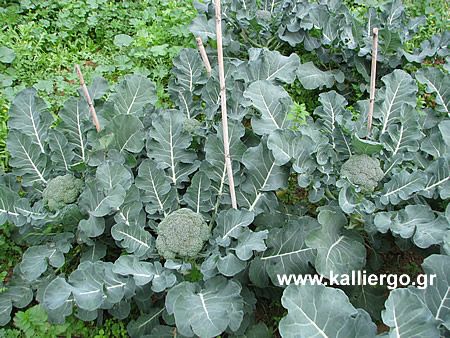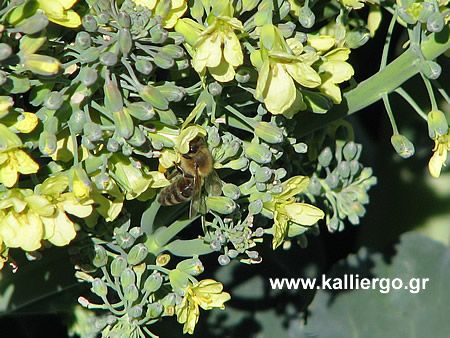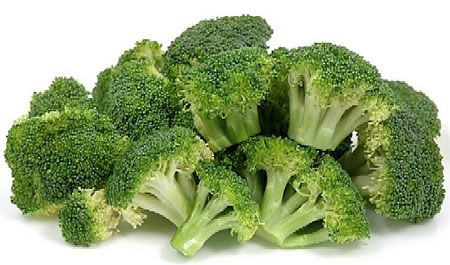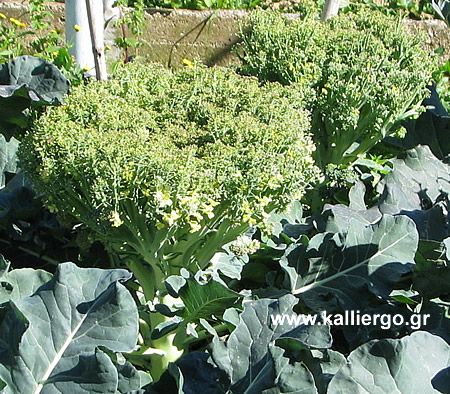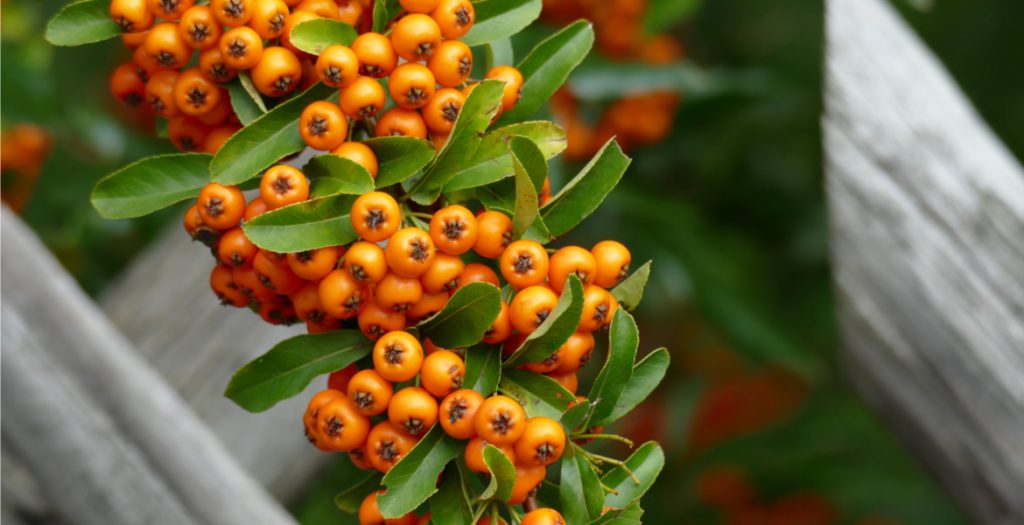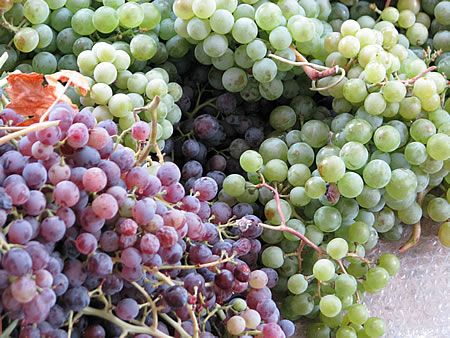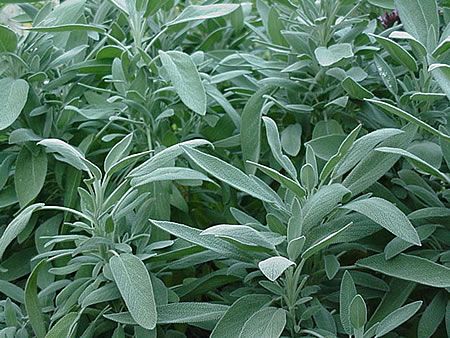How do I grow broccoli in my garden? Broccoli is the super food you can easily grow in your garden!
When I was a kid I didn’t like the smell of it when it was cooking. Now, a little older, I can’t imagine winter without lots of broccoli on the table. It makes a wonderful salad and is so beneficial!
Broccoli (Brassica oleracea), belongs to the same family as cabbage. It is grown for its inflorescence which while immature is edible and rich in beneficial ingredients. The inflorescence is dark green or aubergine in colour and is slightly sparse.
Immature broccoli inflorescence, suitable for harvesting and eating
Flowering broccoli inflorescence unsuitable for consumption, but a paradise for bees!
Broccoli is a close relative of cauliflower. In cauliflower, the inflorescence is white in colour and more dense.
The name broccoli, comes from the plural of the Italian word broccolo, which means “the flowering top of a cabbage”.
Broccoli
Broccoli came from a wild cabbage plant and was developed in Europe. There is evidence that broccoli has been known for 2000 years. From the time of the Roman Empire, the Italians highly revered broccoli and included it in their diet.
Broccoli and cancer
There is scientific evidence that broccoli has preventive anti-cancer properties.
On the website of the American Cancer Society we read, among many other interesting things…
“Broccoli contains certain chemicals that may reduce the risk of colon cancer or other cancers, although it is not clear which individual compounds may be responsible for the protective effect. While research in this area continues, the best advice at this time to reduce cancer risk is to eat a wide variety of vegetables. In this context, it makes sense to include broccoli as part of a balanced diet.“
“Broccoli is considered a good source of nutrients because it is rich in vitamin C, carotenoids (substances similar to vitamin A), fiber, calcium, and folate. Broccoli is also a source of many substances called phytochemicals, or plant chemicals, that may have anti-cancer properties. For example, broccoli contains several substances called isothiocyanates, including sulforaphane and indole-3-carbinol (I3C), which in recent years have been “touted” as potential anti-cancer substances. Early studies have shown these substances can act as anti-oxidants and may enhance the body’s detoxifying enzymes. Some studies have also suggested that they may alter levels of estrogen in the body, which could affect the risk of breast cancer.“
Suitable climate for growing broccoli
The ideal temperatures for growing broccoli are between 10 and 20 degrees Celsius. But no higher than 26 degrees Celsius. If the temperature is above 26 degrees Celsius, then the broccoli inflorescence will bloom quickly to produce seed and will not be edible.
When do we sow broccoli?
Starting from seed
If you plan to start broccoli from seed, you should begin planting the seeds in a seedbed in mid-summer.
It’s a good idea to plant broccoli seeds in a seedbed rather than directly in the soil for three reasons:
- The seeds are small and round and easily move out of the place where they were originally sown. So the seed can roll away from the spot where you planted it and you are watering empty soil…
- In the early stages of growth, when the plant is small and delicate, it becomes food for snails and slugs.
- You will be able to pick out and transplant plants that will grow strong and vigorous.
That’s why you should plant broccoli seeds in seed trays rather than directly in the soil.
In 4 to 6 weeks, the seedlings will have reached a height of 7 to 10 cm, developed 4 true leaves and will be ready for transplanting.
To have a long harvest period, make sure not to plant all the broccoli seeds at the same time in the seedbed. Plant them in groups every 3 to 4 weeks. Transplanting will be done at corresponding intervals. This way you will be able to enjoy the broccoli for longer.
Planting seedlings
If you directly plant broccoli seedlings, be sure to do so by the end of summer or the first few days of September. Personally, in the Attica area, I have planted broccoli seedlings in the early days of October and they grew normally. The instructions, should be adapted to the microclimate of each region.
In order to have a long harvest period, make sure that you do not plant all the broccoli seedlings at the same time. Plant them in groups every 3 or 4 weeks. This way you will be able to enjoy the broccoli for longer.
The broccoli seedlings will need to grow and develop strong shoots and healthy leaves before the cold winter weather sets in.
Where in the garden should I plant the broccoli?
You should plant the broccoli in a part of the garden where the sun will see it at least 4 hours a day.
It is a good idea to make sure that every 2 to 3 years you change the place where you plant the broccoli.
But if you don’t have enough space in your garden, don’t worry. You can get around this rule, as long as you didn’t have a disease problem the year before.
Planting distances
Broccoli grows large and wide leaves around its trunk.
The usual way to plant broccoli is in rows.
- The plant-to-plant spacing in the same row is 30 to 60 cm.
- The distance between rows is 60 to 90 cm.
Preparing the soil before planting
The soil should be well drained (not retaining water).
Before planting, work the soil to a diameter of 30 cm around the planting point. Mix the soil to make it fluffy.
Add perlite if necessary to improve drainage.
Add fertilizer in the form of compost or aged manure.
Broccoli needs soil with increased nitrogen levels.
Care after planting
After planting and every 3 weeks, it is a good idea to amend the soil with a nitrogen-rich fertilizer to help the broccoli grow.
To keep the soil around the root moist, you can put dry leaves or dry grasses or dry straw around the root.
It is on the leaves of the broccoli that the butterflies lay their eggs. Caterpillars emerge from the eggs and eat the leaves. See the related article: Butterfly eggs in vegetables.
Harvesting broccoli
The time when broccoli is ready to harvest varies depending on how it was started.
If you planted seeds, it will be 11 to 15, even 20 weeks before you have your first harvest.
If you planted seedlings, then it will be 8 to 12 weeks until your first harvest.
Broccoli is harvested while the inflorescences are immature and before they start to develop flowers.
A large central inflorescence develops in the center of the stem. This is the first to be cut.
Then smaller lateral inflorescences continue to grow, which can also be cut off after a while.
If you do not harvest the inflorescences in time, they will bloom and can no longer be eaten.
Blooming broccoli inflorescences
Sources:
- https://www.no-dig-vegetablegarden.com/growing-broccoli.html
- https://www.no-dig-vegetablegarden.com/broccoli-pests-and-diseases.html
- https://en.wikipedia.org/wiki/Broccoli
- https://www.cancer.org/treatment/treatments-and-side-effects/treatment-types/complementary-and-integrative-medicine.html
- Now even scientists say broccoli can cure cancer, not just prevent it
Tags: BROCCOLI • CANCER • CULTIVATE • CULTIVATION • GARDEN • SEEDLINGS

